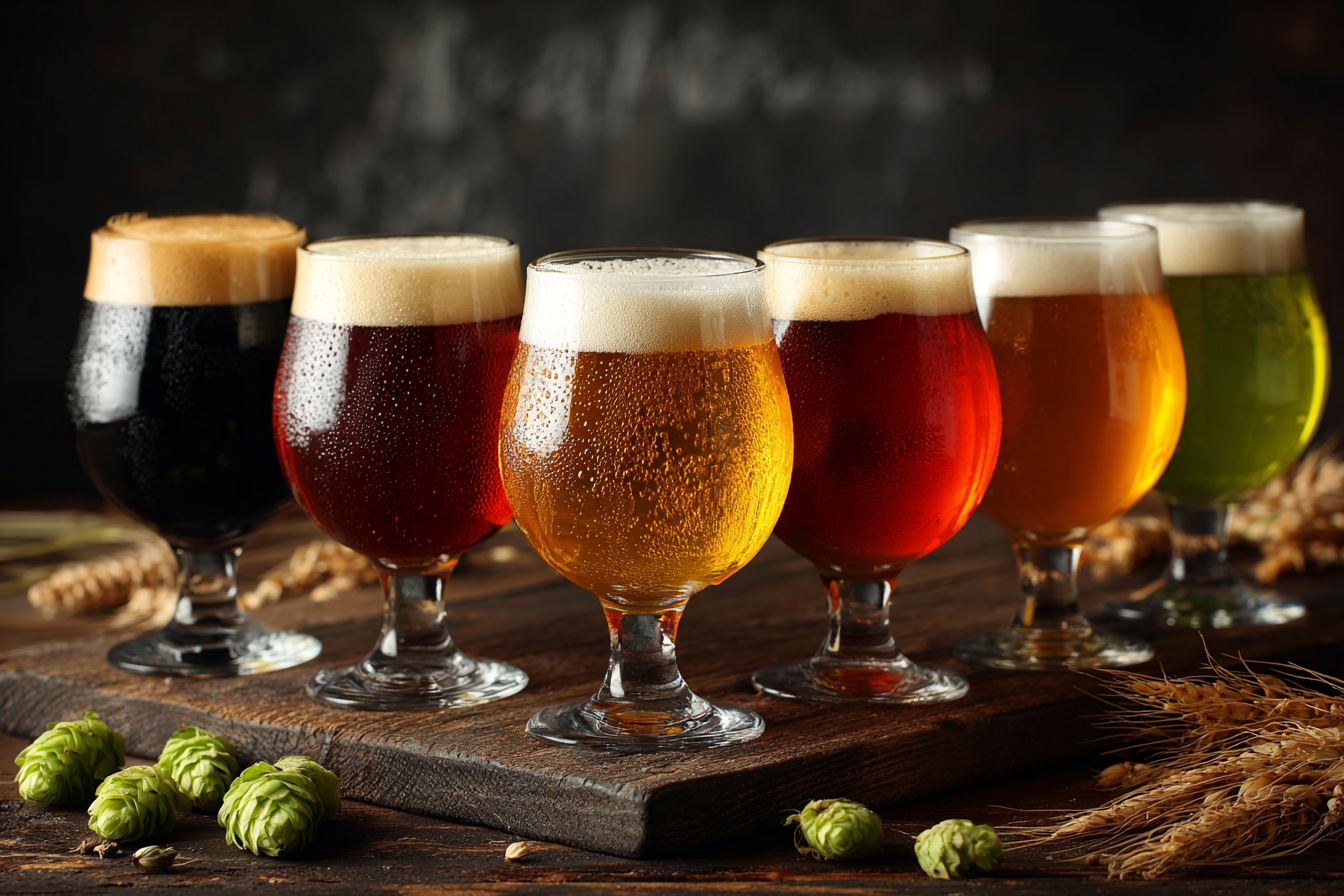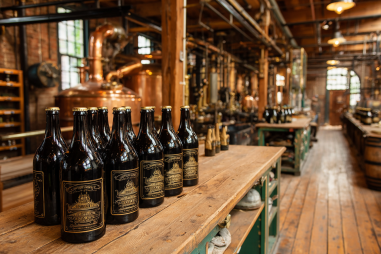American sour beers have swiftly gained a beloved place in the craft beer landscape, celebrated for their bold, vibrant flavors and creative brewing techniques. Unlike traditional beer styles that prioritize malt sweetness or hop bitterness, sour beers offer a refreshing tartness and complexity that intrigue both casual drinkers and seasoned beer enthusiasts. Thanks to innovative brewers across the United States, a range of sour beer styles has flourished, showcasing unique interpretations of this ancient brewing tradition. From approachable kettle sours to intricate barrel-aged wild ales, American sour beers provide a diverse and flavorful journey for the palate. Let’s explore the varied landscape of American sour beer styles, their defining characteristics, and how they stand out both regionally and globally.
What Are American Sour Beers?
Sour beers are characterized by their intentionally tart or acidic taste, which is usually the result of the fermentation process involving wild yeast and bacteria. While sour beers have a rich history in Europe, particularly in Belgium and Germany, American brewers have embraced and reimagined these styles with their own creativity and regional influences. American sour beers often combine traditional souring techniques with modern craft brewing innovations, producing styles that range from light and fruity to deep and complex.
Typically, sour beers are fermented with microorganisms such as Lactobacillus, Pediococcus, and Brettanomyces, which contribute acidity and funky, earthy flavors. American brewers often experiment with these microbes along with different fruits, barrels, and aging methods to push flavor boundaries. The result is a refreshingly tart beer experience that can be sessionable or robust, wild or gently sour.
Types of American Sour Beer Styles
Within the world of American sour beer, several distinct styles have emerged. While these styles can overlap or mix techniques, three primary categories dominate: kettle sours, mixed fermentation sours, and barrel-aged sours.
Kettle Sours
Kettle sours are often the most approachable for those new to sour beers. In this method, the wort is soured rapidly in the brew kettle by introducing Lactobacillus bacteria before boiling it again to kill off the bacteria and stop souring. This process generally takes 24 to 72 hours and results in a clean, bright acidity without the heavy funkiness associated with wild yeast fermentation.
Kettle sours tend to have a fresh, tart profile and are usually lighter in body and color. They often incorporate fruit additions to enhance complexity and balance the acidity. Because of their relatively quick production time compared to traditional sour beers, kettle sours have become very popular with American craft brewers looking to deliver sour flavors efficiently.
Mixed Fermentation Sours
Mixed fermentation sours involve fermenting the beer with a combination of traditional brewer’s yeast (Saccharomyces) along with wild yeast strains like Brettanomyces and bacteria such as Lactobacillus and Pediococcus. These microorganisms work together over extended aging periods, often several months to years, creating complex layers of sourness, earthiness, and funk.
Unlike kettle sours, mixed fermentation beers have a deeper, more nuanced profile with elements of barnyard funk, oak, and subtle spice. These beers are often bottle-conditioned, which allows the wild yeast to continue developing the beer’s character in the bottle. This technique is highly valued within the American sour scene for producing truly unique, evolving flavor experiences.
Barrel-Aged Sours
Barrel-aged sours are one of the most intriguing and prized segments of American sour beers. These beers are aged in wooden barrels—sometimes those previously used for wine, bourbon, or other spirits—where they pick up complex flavors from the wood and the microflora residing in the barrel itself. The interaction between the beer, the wild yeasts, bacteria, and the barrel’s character often results in intensely layered and highly sought-after brews.
These beers typically show profound sourness, funk, and aromas of vanilla, oak, and sometimes fruity esters. Because barrel aging can take months or years, these sours are often produced in limited quantities and are highly prized among collectors and connoisseurs.
Popular Examples of American Sour Beers
Many breweries across the United States have released remarkable sour beers that showcase the diversity and innovation within this category. Here are some standout examples:
- The Bruery’s “Orchard House” – A mixed fermentation sour ale blended with stone fruit, showcasing balanced tartness and fruit complexity.
- Jester King Brewery’s “Le Petit Prince” – A farmhouse sour with mixed fermentation and a lighter, refreshing profile typical of Texas terroir.
- Russian River Brewing Company’s “Supplication” – A barrel-aged sour red ale aged in pinot noir barrels with cherries, combining tartness with rich fruitiness.
- Anderson Valley Brewing Company’s “Boon Doggle” series – Featuring barrel-aged sour ales with variations including oak-aged and fruit-enhanced versions.
- New Belgium Brewing’s “La Folie” – A traditional-style sour brown ale aged in oak barrels, known for its deep complexity and balanced acidity.
How American Sour Styles Differ From Traditional European Sours
European sour beers, such as Belgium’s lambics and Flanders reds or Germany’s Berliner Weisse, typically follow time-honored production methods passed down through generations. These beers often emphasize regional microorganisms, native ingredients, and longer aging in cool climates, resulting in distinctive terroir-driven flavors.
American sour beers, while inspired by these classics, tend to be more experimental and diverse. American brewers are not afraid to cross boundaries by blending styles, adding unconventional fruits, and using innovative techniques like kettle souring for efficiency. Additionally, barrel-aging in American craft breweries frequently incorporates new world wood types and previously utilized barrels for bourbon or wine, adding layers not commonly found in traditional European sour beers.
In essence, American sour beers combine respect for sour brewing heritage with a spirit of innovation and creativity, making them uniquely reflective of the American craft beer scene’s experimental ethos.
Food Pairings for American Sour Beers
The bright acidity and fruity or funky notes of American sour beers make them incredibly versatile for food pairings. Here are some pairing ideas to enhance your tasting experience:
- Kettle Sours: Their clean tartness and light body pair well with seafood (like ceviche or grilled shrimp), fresh salads with vinaigrettes, and mild cheeses such as goat cheese or mozzarella.
- Mixed Fermentation Sours: With more complexity and funk, these pair beautifully with richer dishes like roasted chicken, pork belly, and dishes with mushrooms or herbs. Soft blue cheeses or aged cheddar also make a nice match.
- Barrel-Aged Sours: Their deep oak and oak-driven flavors pair wonderfully with charcuterie, smoked meats, strong cheeses like gouda or comté, and desserts featuring stone fruits or caramelized nuts.
Since sour beers often have a pronounced acidity, they also work well as a refreshing palate cleanser alongside spicy or fried foods, balancing intensity and richness.
Embracing the Diversity of American Sour Beer Styles
The world of American sour beers is as vibrant and varied as the breweries crafting them. From the quick and tangy kettle sours that introduce drinkers to sour flavors without overwhelming complexity, to the wild, barrel-aged beauties that reward patience and curiosity, these beers offer something for every palate. American brewers’ willingness to experiment with ingredients, fermentation methods, and aging techniques has enriched the sour beer landscape, providing an exciting and flavorful journey.
Whether you’re a sour beer newcomer or a seasoned enthusiast, exploring the spectrum of American sour beer styles opens a door to bold taste adventures and an appreciation for the artistry behind every bottle. So raise a glass, savor the tartness, and enjoy the vibrant creativity that makes American sour beers truly special.







